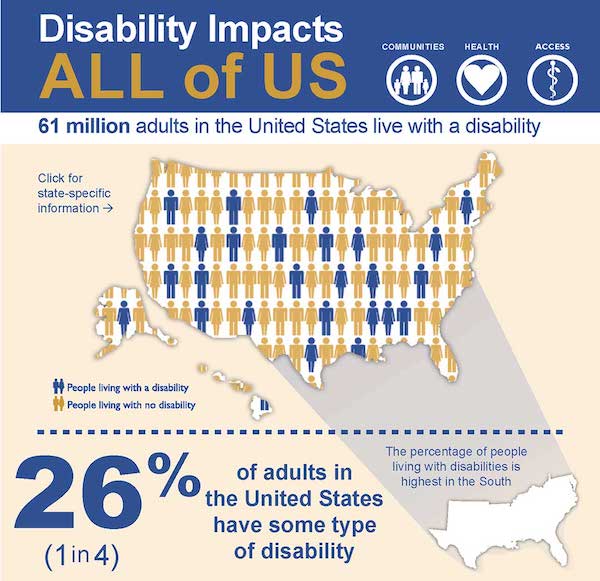What is universal design?
Universal design is a feature or product that is designed to be accessible to all people regardless of their abilities, disabilities or other factors.
Importance of universal design
Usability
Universal design increases the usability of products, environments and systems for everyone. According to the Centers for Disease Control and Prevention, 61 million adults in the United States alone live with a disability (CDC, 2016).

Even if you don’t live with a permanent disability, Universal Design can also benefit people with situational or temporary disabilities. For example, captions on a video can be used by a person that is deaf as well as a person who speaks another language, or a person trying to watch a video in a noisy environment.
Safety
Universal Design improves the safety for many people with a variety of disabilities. A well-known environmental example is a curb cut or sidewalk ramp. They are essential for helping people with motor disabilities safely travel to a location. Universal Design is often used in homes or buildings to accommodate the elderly.
For example, shower grab bars are an essential feature for bathroom safety; they can prevent someone from experiencing a traumatic fall. Non-slip flooring, especially in a bathroom, can also help a wide range of people from experiencing a fall.
Health
Universal Design encourages people with disabilities to participate in social or physical activities that support health. According to the Centers for Disease Control and Prevention, “Adults with disabilities are more likely to have obesity, heart disease, stroke, diabetes, or cancer than adults without disabilities” (CDC). This statistic is correlated to physical activity. Universal Design promotes equal access to physical activities.
For example, accessible hiking trails that assist people with mobility disabilities can encourage people to go outside or implementing braille signs can help people with visual disabilities follow a path without getting lost.